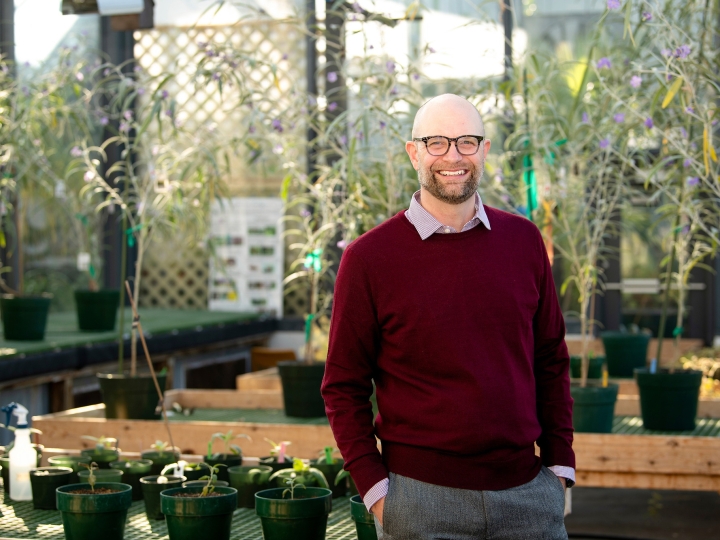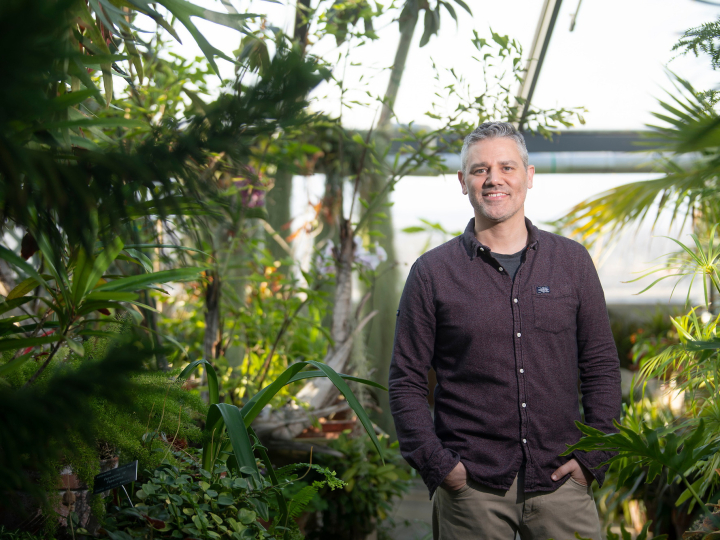Visualizing Networks in the Ancient Mediterranean at the Annual Digital Scholarship Conference
October 28, 2016
There aren't many people who can close their eyes and visualize ancient Mediterranean trade routes. And while Professor Tom Beasley, classics & ancient Mediterranean studies, is one of them, he wants to make that kind of specialized knowledge more widely accessible.
In 2015, Beasley received support to develop an interactive map of networks in the ancient world through a Mellon Digital Summer Research Grant, awarded by Library & Information Technology at Bucknell. As he began the project, he realized that although he understood political, economic and religious networks in antiquity from the perspective of a classics scholar, his self-taught programming knowledge wouldn't be enough to create the technical application to bring his vision to life. That's why he partnered with computer science major SunéSwart '17. They have spent the past two summers building the program, and will present their work at Bucknell's third annual Digital Scholarship Conference, Oct. 28–31.
This year's conference, Negotiating Borders through Digital Collaboration, welcomes more than 190 participants from institutions ranging from Simon Fraser University in British Columbia, Canada, to Guilford College in North Carolina. More than 40 Bucknell students, faculty and staff will attend to share a diverse range of digital scholarship projects. Among them are Professor Janice Mann's art history research and digital archive of collections from the Packwood House Museum, which she'll present with student collaborators Rebecca Reeve '17, Nicole Adams '18 and Ariel Senackerib '17, and Professor Richard Crago's civil & environmental engineering research on the use of a Geographic Information System (GIS) to protect water quality, which he'll present with GIS specialists Janine Glathar and LuyangRen, and ChandaSingoyi '18.
Beasley and Swart are excited to have a much more developed program to share with attendees than they did last year. Beasley explained that they built the application from the ground level, neither of them having previous experience with this type of project.
To start, Beasley and Swart had to figure out how they would store all of the information they planned to present. "We didn't do any coding at first," said Swart. "We actually drew it all out by hand on a board, including paths and links." It wasn't easy, because they weren't sure what the final product should include or how they would link literary, epigraphical and archaeological data.
"It was a lot of work to come in at the basement floor," said Beasley. "Suné was designing the foundation of it along with me, and that's not just a computer science problem — a lot of it is a conceptual humanities problem. It really took us into disciplinary questions in the humanities."
For instance, Beasley explained that they had to decide how to handle dates from inscriptions found on buildings and monuments, or in books. Some exist that purport to be authentic, but are really forgeries. Their data structure needed to be built to make clear when such a date is controversial.
In addition, they created a set of forms that will allow students and scholars to contribute their own data to the live site. This feature will be open to researchers, and Beasley plans to use it in classes, allowing students to add data to the map, like temple locations or a segment of Odysseus' journey. He hopes this will help students develop better spatial literacy around the geography of the Mediterranean.
Swart presented their work at the Susquehanna Valley Undergraduate Research Symposium and also at a Library Unbound program during the Class of 2020 New Student Orientation. At the Digital Scholarship Conference, Beasley will present a digital poster session, including a demonstration of the new live evidence-adding feature. He also plans to make sure Swart's contribution is highlighted. "This would not exist without us working as colleagues," said Beasley. "Working on our own isn't enough. It's really the interaction that has made this project happen."
As they consider what comes next, Beasley said that interacting with digital scholarship colleagues at the conference is an important opportunity. "I'm really looking forward to talking with colleagues about how they handle the editorial side of things when they're doing crowdsourcing research, and to learn more about how to incorporate new data — logistical technical questions and big social questions," he said. "The conference is a great place to talk with others who have grappled with these types of issues."

